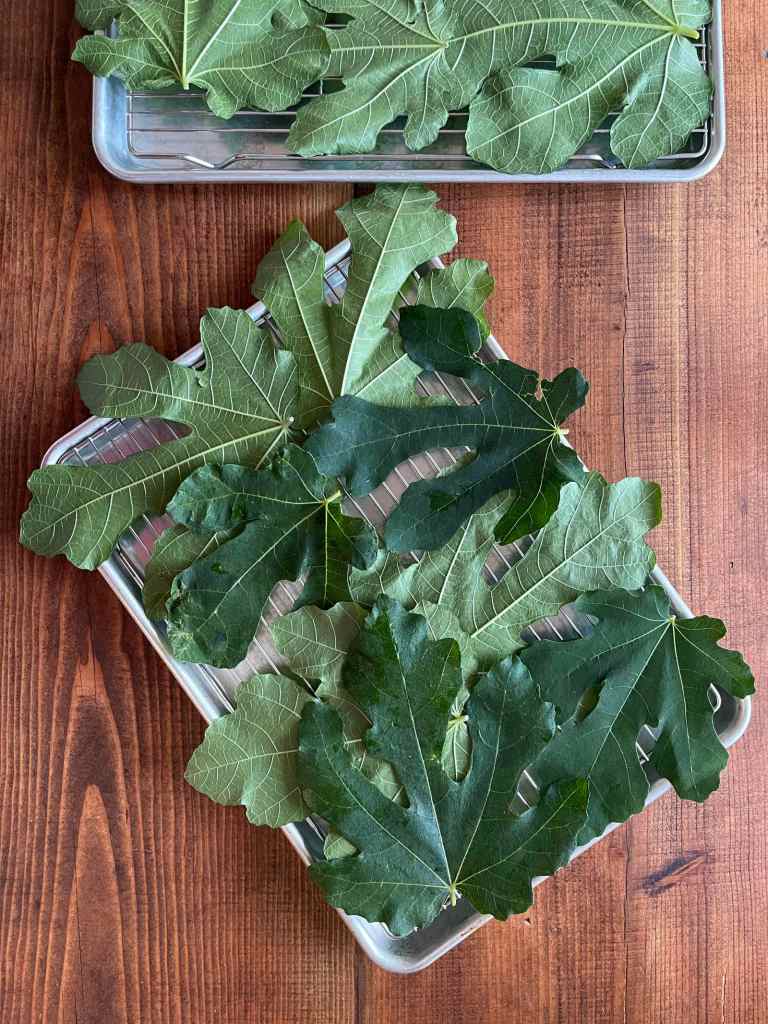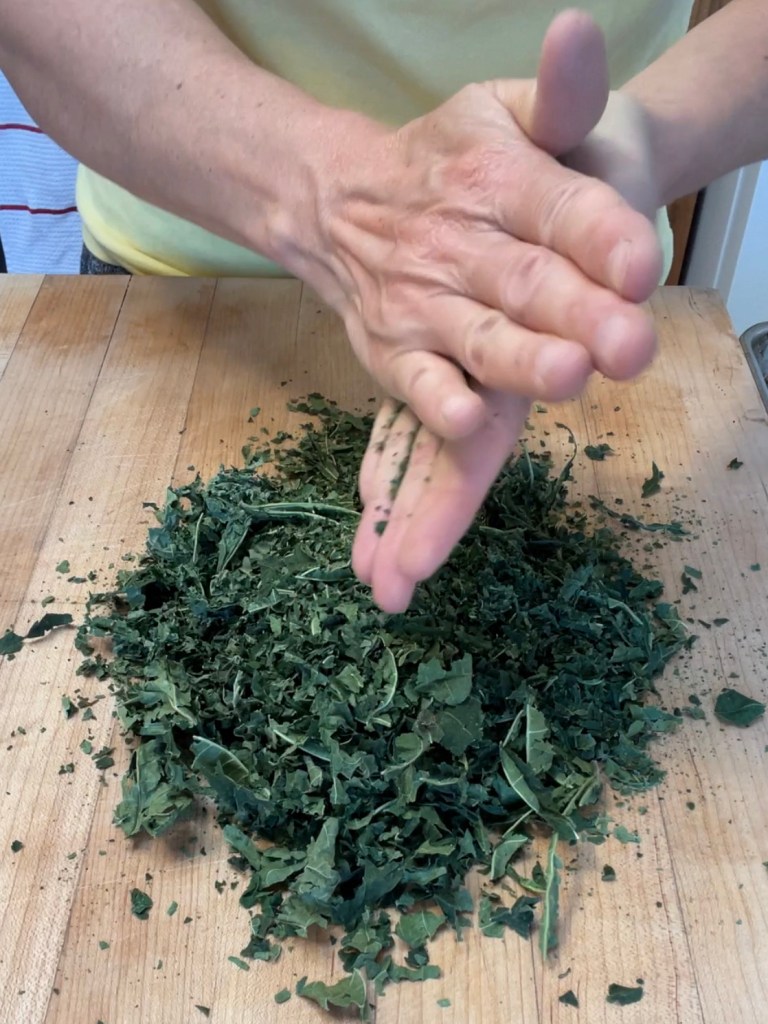Jump to Recipe
Fig leaf tea may help me sleep at night not because it possesses any sleep-inducing properties (that I know of) but because I’ve started to drink it in the afternoons instead of black tea.
I look so forward to my first cup of puerh every morning. In my medium-size teapot, I brew 2 teaspoons of this fermented, aged black tea, along with ¼ teaspoon cacao nibs and (until recently) drink it all day long. For the past few weeks, I’ve cut myself off at 1pm (which may still be too late) in the hopes that I’ll sleep at night. From 1pm onward, I’ve been drinking herbal tea.
As I started getting low on herbal tea, I happened to trim our fig tree. I wondered if I could dry the leaves and brew them. Turns out, I can! And I save money!
Fig leaf tea tastes something like mild green tea—grassy and earthy. It has a sweet, woody fragrance.
Plastic-free tea
By brewing loose-leaf tea, whether you make it yourself from foraged leaves or you buy it at the store, you’ll avoid consuming microplastics.
Many tea bags contain plastic in the bag’s sealant. The paper itself of other tea bags contains plastic. And “silky” synthetic bags are completely made of plastic. (Synthetic is plastic.) Just one of these silk-like bags can shed billions of microplastics into a single cup of tea. And although scientists don’t know what effect ingesting a petroleum-based product laced with toxins has on us, I will hazard a guess that it’s bad.
Harvest the fig leaves
If you don’t have a fig tree, you may be able to forage the leaves. These borderline invasive trees grow all over the place where I live in Northern California. A critter must have dropped his treat in the backyard because we did not plant our fig tree. The critter also seems to return for the figs once they ripen (I ate only one last year).
When harvesting the leaves (and also when harvesting figs), wear gloves. You may be allergic to the milky white sap that oozes from cut fig leaves and cut unripe figs. This sap can cause a skin rash.

Dehydrate the leaves, brew the fig leaf tea
I triple washed the leaves (and saved the water for the garden), and dried some of them in the oven at a very low temperature of 200°F for 30 minutes. Others I dried in the oven after baking bread, turning off the oven and allowing it to cool for about 15 minutes before arranging the leaves directly on the wire racks. I shut the door and let the leaves dry overnight. By morning, they had turned crisp. If you have a solar food dehydrator, fig leaves are perfect for drying in it.
Next, I crushed the dried leaves with my hands, heated the water, filled an infuser with about a tablespoon’s worth and brewed a cup.
Thirty-five fig leaves rendered the equivalent of about 20 tea bags.










Fig Leaf Tea
Wash the fig leaves and allow them to dry.
Preheat the oven to 200℉. Arrange the fig leaves on a cooling rack set on a baking sheet. Dehydrate in the oven for approximately 30 minutes. Remove from the oven to cool. Crush the leaves with your hands and stores in glass jars. (Alternatively, dehydrate the leaves in a food dehydrator.)
To brew a cup of tea, fill and infuser with a tablespoon of the crushed fig leaves. Immerse in a cup of hot water and let sit for about 5 minutes. Add sweetener if desired.
Buy my award-winning cookbook!
Learn more here.

